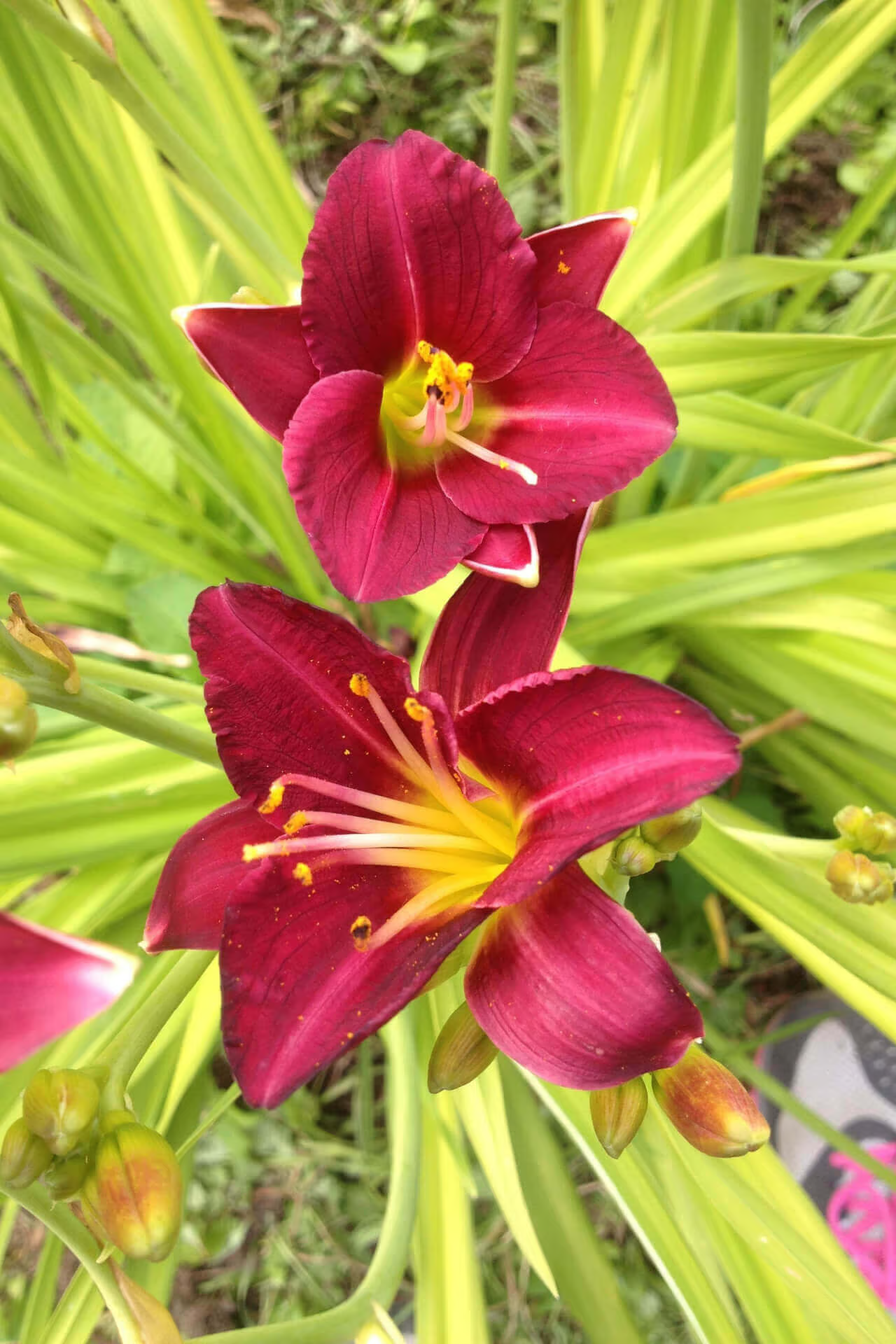



15 Assorted Daylillies - 5 Plants Each - Red, Orange and Yellow
Thrives in diverse soil types
Long-lasting vibrant blooms
Variety of colors available
Thrives in
ZONE 4ZONE 5ZONE 6ZONE 7ZONE 8ZONE 9This plant ships:
7-10 Days1 Year Guarantee on all plants
15 Assorted Daylillies For Sale
Assorted Daylillies are a popular choice for landscaping due to their vibrant blooms, ease of care, and versatility. These perennial plants offer numerous benefits that make daylilies an excellent addition to any garden or landscape design. Daylilies provide various advantages, from their wide range of colors and patterns to their adaptability to different soil conditions.
Get 5 Daylilies, Each In Red, Orange, and Yellow Stella De Oro. This plant ships bare-root and dormant (no leaves or foliage). It will not green out until next spring.
Assorted Daylillies For Vibrant Warm Season Blooms
Adding Hemerocallis - 5 plants each - red, orange, and yellow - will make your yard vibrant and colorful. Daylilies come in a rainbow of hues and patterns, including self, blend, polychrome, baritone, bicolor, and banded. Their blossoms can be a mixture of colors, like purple and gold, or a combination of scarlet and lemon. Some daylilies can grow up to four feet tall. They typically bloom between mid-spring and early autumn, with June being their most prolific month. Even though each bloom only lasts a day, it can take a month or longer for all blooming.
Create Havens for Pollinators With Our Assorted Daylillies
These flowers are beautiful additions to rock, butterfly, and children's gardens. Butterflies and hummingbirds are just two of the many pollinators that daylilies attract with their nectar and pollen. The blue, lemon, and purple flowers draw in lots of bees. These plants rely on pollination to reproduce and create fruit. Because the daylily fruit is a loculicidal capsule, its walls ripen and crack to release the seeds.
Design Vibrant Walkways and Borders
One of the many uses for daylilies is as a border plant, but they also look lovely scattered around a garden. They work exceptionally well, filling empty spaces in flower beds and sloped banks. They encourage people to stay on the designated path when used as walkway edges. It's common to see them planted along fences, walkways, terraces, and curbsides. Another option is to grow these flowers around a foundation. Their leaves complement a variety of other flowers, like rhododendrons, boxwoods, and evergreens.
Suppress Weed Growth By Planting These
Daylilies are excellent weed suppressants because their dense foliage smothers and eventually kills most weeds. Another way they help get rid of weeds is by blocking photosynthesis. This means the weeds can't obtain the nutrients (carbohydrates) they need to grow, so they die. Planting 15 assorted daylillies - 5 plants each - will kill young, immature weeds.
This Is How Your Plants Will Look upon Delivery

Bloom Season
Summer
Bloom/Foliage Color
Mixed
Height at Maturity
Over 12"
Care
Water Assorted Daylilies regularly, ensuring soil remains moist but well-drained. Apply mulch to save water and stop weeds. Fertilize in spring. Deadhead spent blooms to encourage continuous flowering and remove yellowing foliage for a tidy appearance.
Plant Reproduction
Daylilies spread via underground rhizomes and clump division
Shipping date depends on the date displayed and chosen when you order from the product's page.
We only accept returns on plants verified dead. If you think your plants have died, we offer a 1 year warranty, please use this File a Claim Link to verify dead plants and start with return warranty process.






15 Assorted Daylillies - 5 Plants Each - Red, Orange and Yellow

Generous Quantity:
With 15 plants included, this package provides excellent value and sufficient coverage, allowing you to create a cohesive and striking floral arrangement in your outdoor space.
.
Versatile Use:
Perfect for a variety of garden settings, including borders, beds, and containers, these daylilies add dynamic beauty and flexibility to any landscaping project, adapting easily to different environments.
Low Maintenance:
Requires minimal care, making these plants perfect for busy gardeners or those new to planting. Their easy upkeep allows you to enjoy their beauty without the hassle of constant attention.
Resilient Plants:
Known for their durability and ability to handle diverse weather conditions. These hardy plants are reliable and continue to flourish, even in less-than-ideal conditions.
Caring Tips
How do I care for my 15 Assorted Daylillies - 5 Plants Each - Red, Orange and Yellow?
Each box contains detailed care instructions and information about your product. But here's the basics.
Care Tips
Water Assorted Daylilies regularly, ensuring soil remains moist but well-drained. Apply mulch to save water and stop weeds. Fertilize in spring. Deadhead spent blooms to encourage continuous flowering and remove yellowing foliage for a tidy appearance.
Light Requirements
Assorted daylilies thrive in full sun, needing at least 6 hours of sunlight daily for optimal blooming. They can handle part shade, particularly in hotter climates, but reduced sunlight may lead to fewer flowers and slower growth.
Hardy Planting Zones
4 • 5 • 6 • 7 • 8 • 9
Header
Use this content to share information about your store and products.
Frequently Asked Questions
How often should I water my plants?
How do I know if my plant is getting too much or too little sunlight?
What should I do to prepare my plants for winter?
What are the signs that my plant needs fertilizing?
How can I prevent pests from damaging my plants?
How do I choose the right plant for my climate zone?






